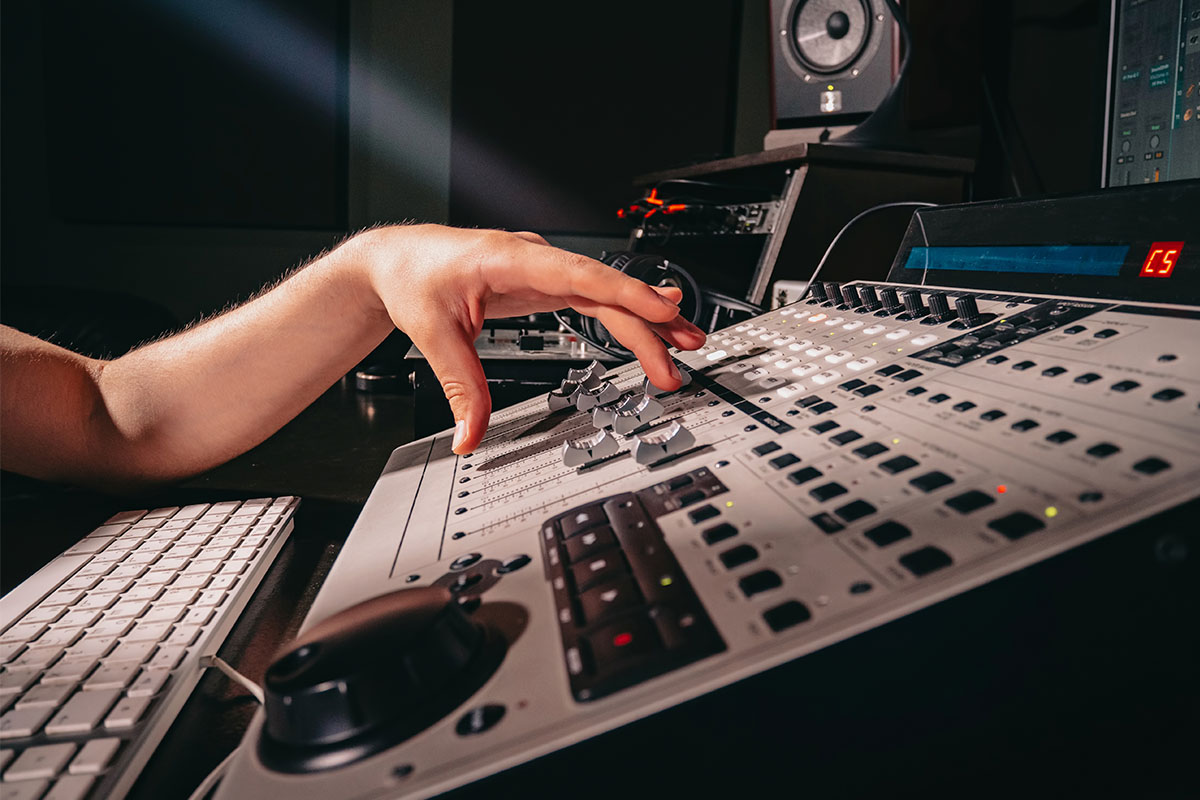
Video Production Companies in Johannesburg: Ambient Sound
If you have ever watched A Quiet Place (2018), you know how sound—or the lack of it—can take your experience to a whole new level. In a world where silence is the key to survival, every little sound, from a creaking floorboard to a gust of wind, carries a weight that builds tension and keeps you on the edge of your seat. The film cleverly uses ambient sound to make each moment feel more intense, even though it is not always in the foreground. It is a great example of how sound, even when it is subtle, can deeply affect how we engage with what is happening on screen. For video production companies in Johannesburg, this technique goes beyond just adding noise to fill the silence. Ambient sounds are an essential part of the story—guiding emotions, helping to set the scene, and enhancing the overall experience for the viewer. In this article, we will take a closer look at how ambient sound influences viewer engagement, the psychology behind it, and how video production companies in Johannesburg are using sound to elevate their projects.
The Psychology Behind Ambient Sound
Sound has a unique ability to influence human emotions. Our brains are wired to respond to auditory stimuli in ways that often affect our mood and perception. For video production companies in Johannesburg, understanding the psychological impact of sound is key to ensuring that viewers are drawn into the narrative and remain engaged throughout the video.
Emotional Impact
Certain sounds have been shown to elicit specific emotions. A gentle breeze, for instance, can evoke a sense of calm, while the bustle of a busy street can stir feelings of energy or tension. These responses are grounded in our evolutionary need to process environmental sounds quickly for survival. In video production, ambient sound taps into this natural process, guiding the viewer’s emotional experience without them even being aware of it.
For example, consider a film scene set in a peaceful rural area. The subtle chirping of birds, the rustle of leaves in the wind, and the distant sound of flowing water may create a soothing atmosphere that invites relaxation. On the other hand, in a scene depicting a tense moment, the constant hum of industrial noise or the distant rumble of thunder can create a sense of unease. These ambient sounds, though subtle, work to manipulate the viewer’s emotional state, adding layers to the story and amplifying the visual narrative.
Cognitive Engagement
Sound does not only affect emotions—it also plays a role in how we process and understand information. Ambient audio helps to guide attention and provide context, allowing viewers to better understand the setting and atmosphere. For example, a video set in Johannesburg could use the sound of local traffic, distant conversations, and the rhythmic sounds of the city to reinforce the sense of place. These auditory cues assist the viewer in mentally placing the scene within its context, helping them follow the storyline more effectively.
In addition, sound can enhance our memory of the scene. Studies have shown that people are more likely to remember information when it is paired with auditory stimuli. This is why films and documentaries often use carefully selected ambient sounds to reinforce key moments, ensuring that viewers retain important elements of the story.
Techniques in Ambient Sound Design
For video production companies in Johannesburg, creating the right atmosphere through sound is no simple task. It requires a deep understanding of sound design and the use of various techniques to blend different auditory elements into a cohesive and immersive experience.
Layering and Mixing
One of the most important aspects of sound design is layering—combining different sounds to create a rich, multi-dimensional auditory experience. This can involve layering sounds such as background chatter, natural elements like wind or rain, and even subtle noises like footsteps or a door creaking. When done effectively, these layers create a soundscape that feels alive and dynamic, providing the audience with a realistic and immersive experience.
Mixing refers to the process of adjusting the levels of different sounds to ensure that no element dominates the scene. For example, in a Johannesburg market scene, the sound of people talking may need to be balanced with the background noise of vehicles and vendors. If done well, the result is a sound environment that complements the visual elements without distracting from the story.
Spatial Audio
Another technique that enhances engagement is the use of spatial audio. This approach involves positioning sound elements in a three-dimensional space to mimic how we hear sounds in the real world. By using advanced audio tools, sound designers can create a more immersive experience, where sounds come from specific directions—above, below, to the left or right of the listener—giving the viewer the sense that they are truly “inside” the scene.
Spatial audio can be particularly effective when combined with visuals that also rely on depth and perspective. In a Johannesburg-based production, for example, the sound of distant traffic could be heard coming from one side of the screen, while the sound of a nearby conversation could come from the other. This adds depth and realism to the experience, drawing the viewer deeper into the world of the video.
Technology in Ambient Sound Design
The tools and technologies used in sound design have evolved significantly over the years. Today, sound designers have access to a variety of software and hardware that allow them to create complex, immersive audio environments.
Advanced Audio Tools
Digital audio workstations (DAWs) like Pro Tools, Logic Pro, and Ableton Live are widely used in the industry for recording, mixing, and editing sound. These platforms allow sound designers to manipulate ambient audio in highly sophisticated ways, adjusting everything from volume levels to the tone and texture of individual sounds.
Additionally, the use of high-quality microphones and field recording equipment allows for the capture of real-world sounds with exceptional clarity. When combined with advanced editing and mixing techniques, these tools can create audio that feels rich and lifelike.
Immersive Audio Formats
Emerging audio formats, such as Dolby Atmos, have revolutionised the way sound is experienced in video. Dolby Atmos, for instance, allows sound to move freely around the listener in a three-dimensional space, offering a more immersive experience than traditional stereo or surround sound. As Johannesburg-based video production companies adopt these immersive formats, they are able to offer viewers a heightened sense of presence, whether they are watching a film, documentary, or advertisement.
Overcoming Challenges in Sound Design
While ambient sound is essential to creating an immersive experience, it is not without its challenges. Video production companies in Johannesburg, like those elsewhere, must navigate technical constraints, cultural considerations, and the delicate balance between sound and silence.
Technical Limitations
One of the most significant challenges in sound design is working within the technical constraints of equipment and acoustics. High-quality microphones and recording gear are essential, but even with the best equipment, achieving perfect sound quality can be difficult. Background noise, room acoustics, and other environmental factors can affect the final product. Sound designers must work creatively to address these limitations and ensure that the audio still achieves the desired effect.
Balancing Sound and Silence
Another challenge is the balance between sound and silence. While ambient audio can add richness to a scene, too much sound can overwhelm the viewer. It is important to use silence strategically to allow for moments of reflection or to heighten the impact of a significant scene. A skilled sound designer knows when to incorporate subtle audio and when to allow space for silence, which can be just as powerful as sound itself.
Cultural Sensitivity
In Johannesburg, a city rich in diverse cultures, sound design must also take cultural sensitivity into account. Sounds that are specific to a particular culture or community may carry different meanings or evoke different reactions. Video production companies must be mindful of these nuances when incorporating ambient sounds, ensuring that they respect the cultural significance of certain sounds and use them appropriately.
The Impact on Viewer Engagement
The role of ambient sound goes beyond merely adding realism—it actively shapes how viewers engage with a production. When done well, ambient audio can increase emotional immersion, enhance memory retention, and deepen the viewer’s connection to the story.
Immersion and Realism
Ambient sound plays a vital role in making the viewing experience feel real. By using natural sounds that align with the visuals, video production companies in Johannesburg can create scenes that feel authentic and immersive. Whether it is the sound of a Johannesburg street or the quiet hum of a rural environment, these audio elements help create a sensory experience that makes the viewer feel as though they are actually in the scene.
Viewer Retention
High-quality ambient sound can also improve viewer retention. Research has shown that people are more likely to remember information when it is paired with audio cues. By using ambient sounds strategically, video production companies in Johannesburg can help ensure that viewers retain important details and are more likely to recall the video long after they have watched it.
Conclusion
To bring everything full circle, think about the role of sound in The Conjuring during that iconic thunderstorm scene. The sounds of the rain pouring down and thunder rumbling in the distance heighten the tension. But it is the quieter background sounds—the wind rustling through the trees or the distant creaking of the house—that really make you feel unsettled. This shows how ambient sound works subtly, setting the stage for a more immersive experience without drawing attention to itself.
Similarly, for video production companies in Johannesburg, ambient sound plays an essential role in creating a realistic environment and keeping viewers connected to the content. The right background sounds can shape the mood, guide attention, and bring out key details of a scene, all while staying in the background. It is these subtle elements that add depth and context, helping to make the experience more immersive without overwhelming the audience.
If a picture is worth a thousand words, then the right sound is worth even more! Sound Idea Digital is here to help your project hit all the right notes. Get in touch and let’s make your audio just as unforgettable as your visuals.
We are a full-service Web Development and Content Production Agency in Gauteng specialising in Video Production, Animation, eLearning Content Development, Learning Management Systems, and Content Production.
Contact us for a quote. | enquiries@soundidea.co.za | https://www.soundideavideoproduction.co.za| +27 82 491 5824 |

